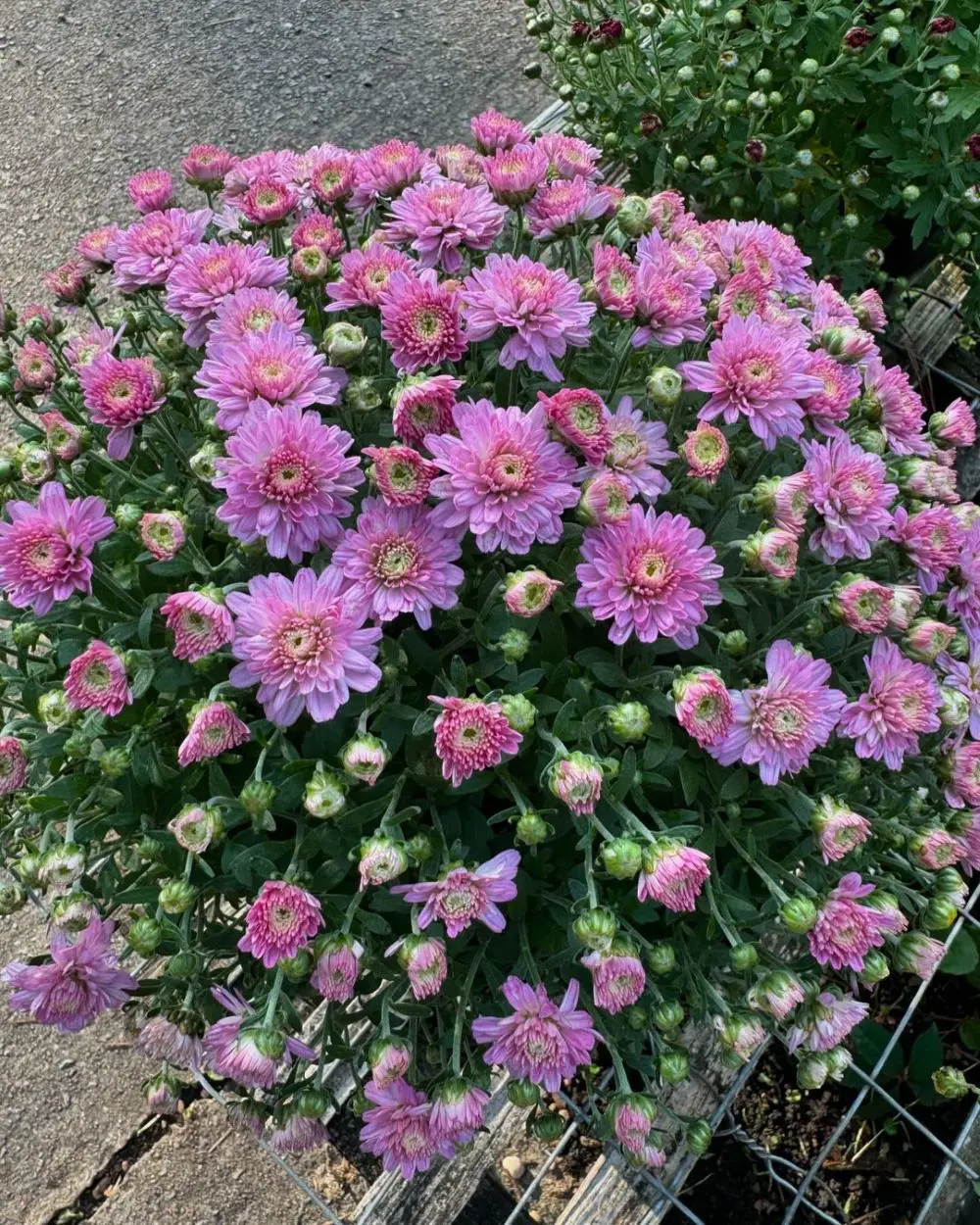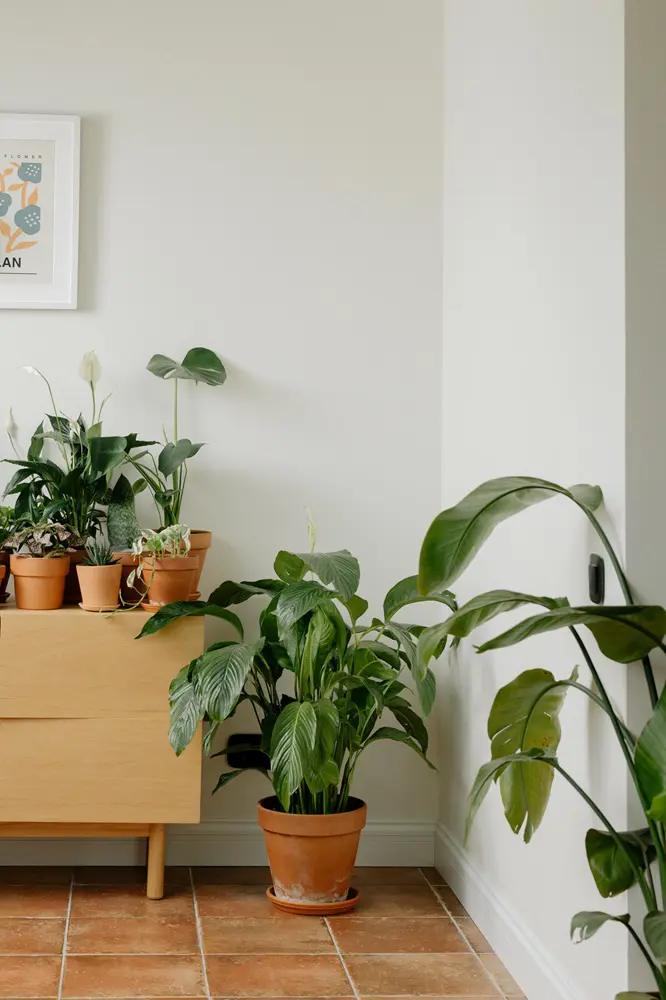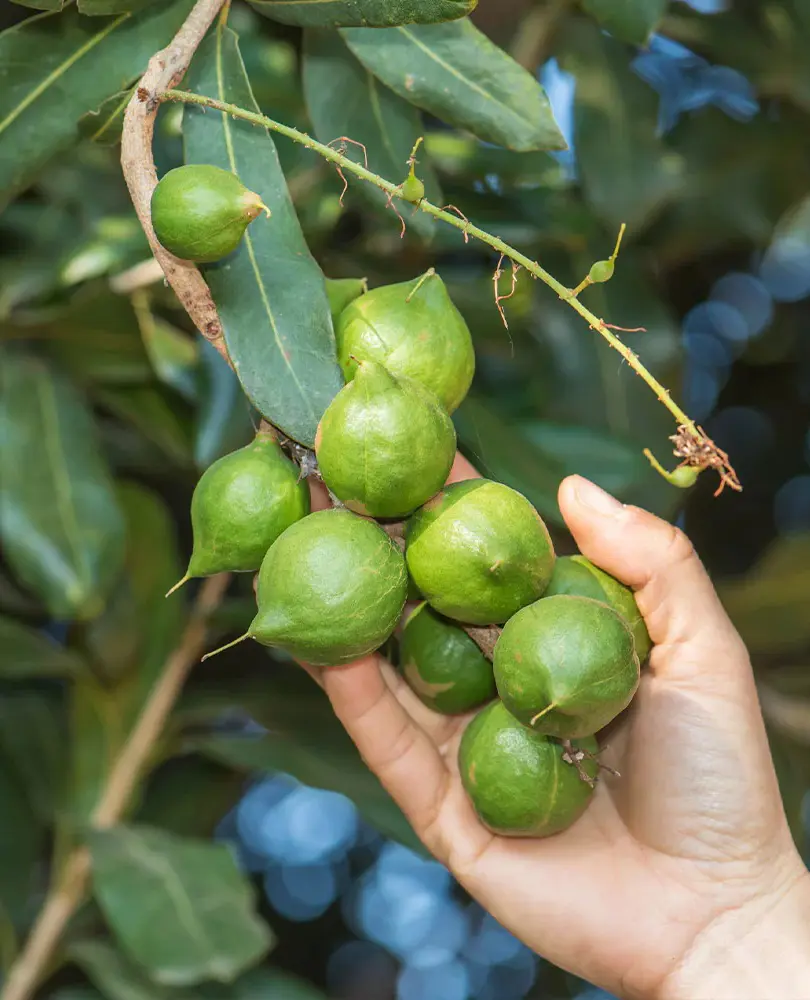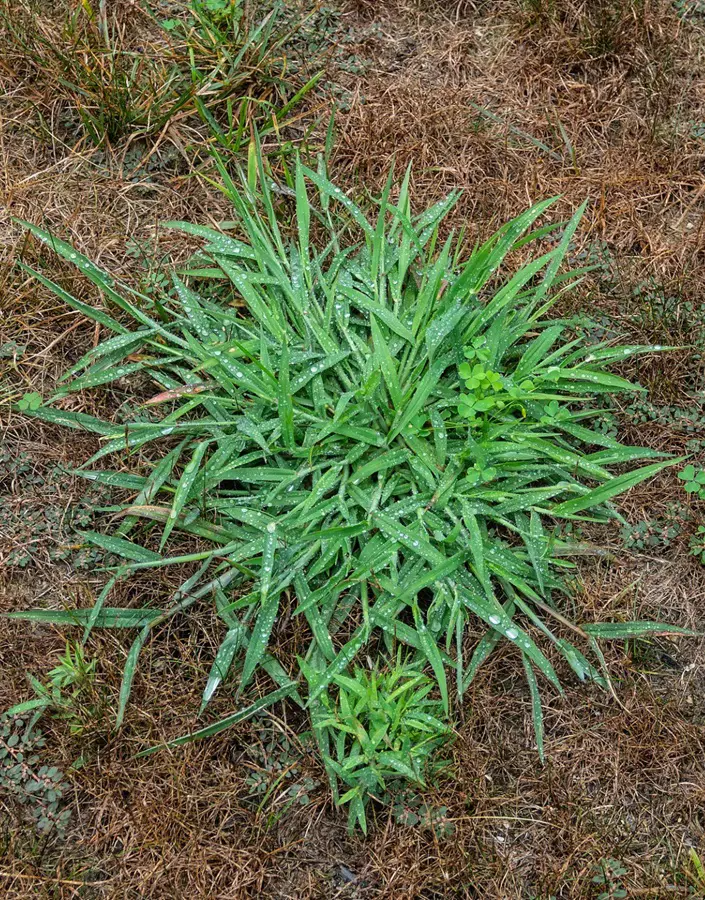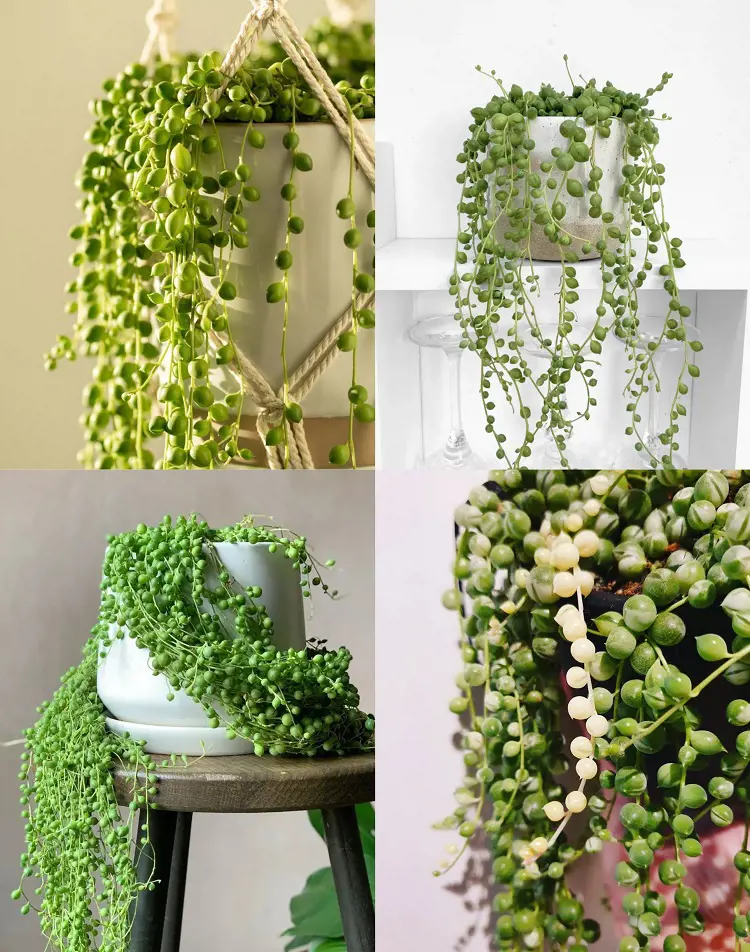
If you're looking for a unique plant to brighten up your home, consider the charming string of pearls. Resembling a delicate necklace with its green, bead-like leaves, this succulent plant is easy to care for and thrives in warm conditions.
Perfect for busy plant enthusiasts, it requires minimal watering. Choose your preferred variety and showcase its beauty in hanging baskets, as these small plants naturally cascade downward. Explore the following tips to ensure your string of pearls plant flourishes, making it a delightful addition to your indoor garden.
Introduction-String Of Pearls

The string of pearls plants are succulents recognized for their tiny, pea-shaped leaves. Originally from South West Africa, they grow as ground cover in the wild. As indoor plants, they create beautiful draping vines in window boxes, hanging baskets, and pots. Along with their pearl-like leaves, these plants bloom with small white flowers during the spring.
- Botanical Name: Curio rowleyanus (formerly Senecio rowleyanus)
- Common Names: String of pearls, string of beads, string of peas, rosary vine
- Family: Asteraceae
- Plant Type: Succulent
- Hardiness Zones: 9 – 12 (USDA)
- Sun Exposure: Full to partial sun
- Soil Type: Sandy, well-drained
- Soil pH: Neutral to acidic
- Bloom Time: Summer
- Flower Color: White
- Native Area: Africa
Care For String Of Pearls

Taking care of the string of pearls plant is quite easy. As long as it gets enough light and fertilizer, it grows well. A single plant can last about five years with proper care, but you can keep it alive indefinitely by making new plants from stem cuttings.
Overall, it's a low-maintenance plant, great for beginners. However, things like too much humidity, poor drainage, crowded conditions, and not enough light can make your plant weak. So, follow some care tips in detail:
Bright, Indirect Light

Your string of pearls succulent plant loves bright, indirect light to be happy and healthy. Whether you decide to keep it indoors or let it grow outside, it does best with a combination of bright light and some shade.
Be careful with direct sunlight, as it can harm the plant, causing damage. Keep an eye on it, especially during the intense afternoon sun, to make sure it's getting the right amount of light. This way, your string of pearls will thrive and stay beautiful.
Moderate Temperature

Keep your string of pearls comfortable by maintaining a daytime temperature between 70-80°F (21-27°C) and ensuring it doesn't drop below 50°F (10°C) at night. This temperature range mimics its native environment, supporting optimal growth.
String of pearls, being a succulent, thrives in warmth but is sensitive to extreme cold. Consistent temperatures provide stability, allowing the plant to flourish. If you're keeping it indoors, be mindful of drafts or sudden temperature fluctuations. By providing the right temperature conditions, you create a cozy environment for your string of pearls.
Well-Draining Soil

Make sure your string of pearls has the perfect soil to stay healthy. Succulents, like the string of pearls, really like soil that drains well. You can use a ready-made mix for succulents or cacti, which already has the right amount of pumice or perlite, making the soil just right.
If you're using regular soil, adding some pumice or perlite can also help. This special soil mix ensures good air circulation and stops the soil from holding too much water. So, your string of pearls will be happy, and you won't have to worry about overwatering.
Choose Small Container
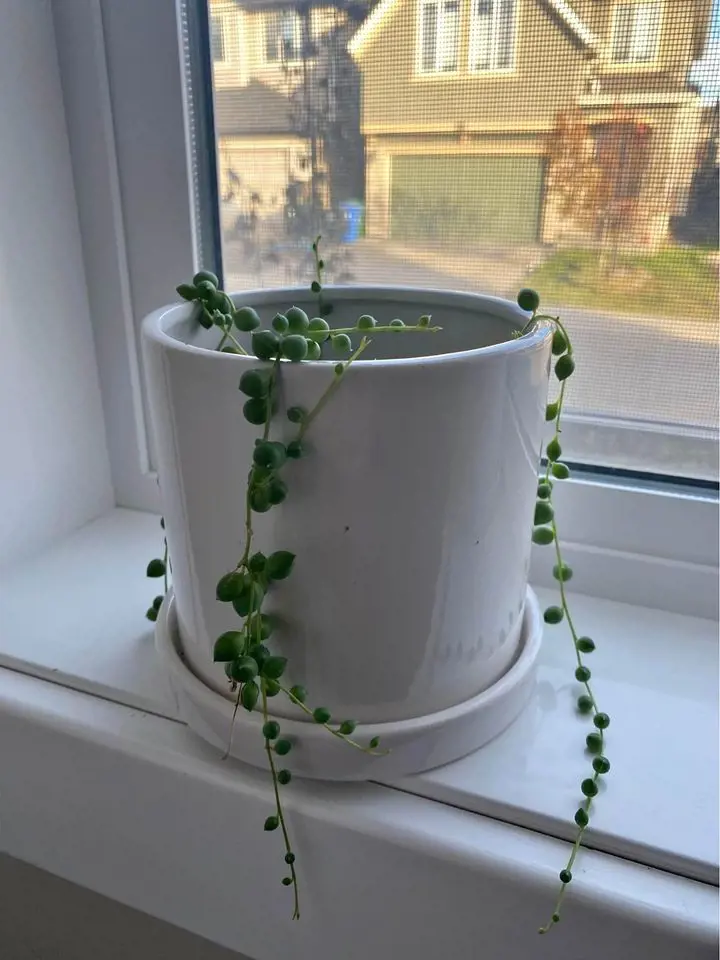
Give your string of pearls a cozy home by picking a small clay pot. These plants have tiny roots, and they like it that way. Using a porous clay pot, like terracotta, is excellent because it stops too much water from sticking around.
Big pots can keep water for too long, and that's not good. Too much water can make the soil too wet, and the roots might start to rot. So, go for a small clay pot with holes at the bottom for water to escape.
Water Deeply, Then Let Dry

When taking care of your string of pearls, water it deeply, then let it dry out. In spring and summer, make sure the soil is just a bit moist and water it every two weeks. But, in winter, go easy and water it only once a month.
If you see the little pearl-like leaves looking a bit shriveled, it's a sign the plant is thirsty, give it some water. Remember, not too much water, especially in the winter, and your plant will thank you with those lovely cascading strands!
Water Quality
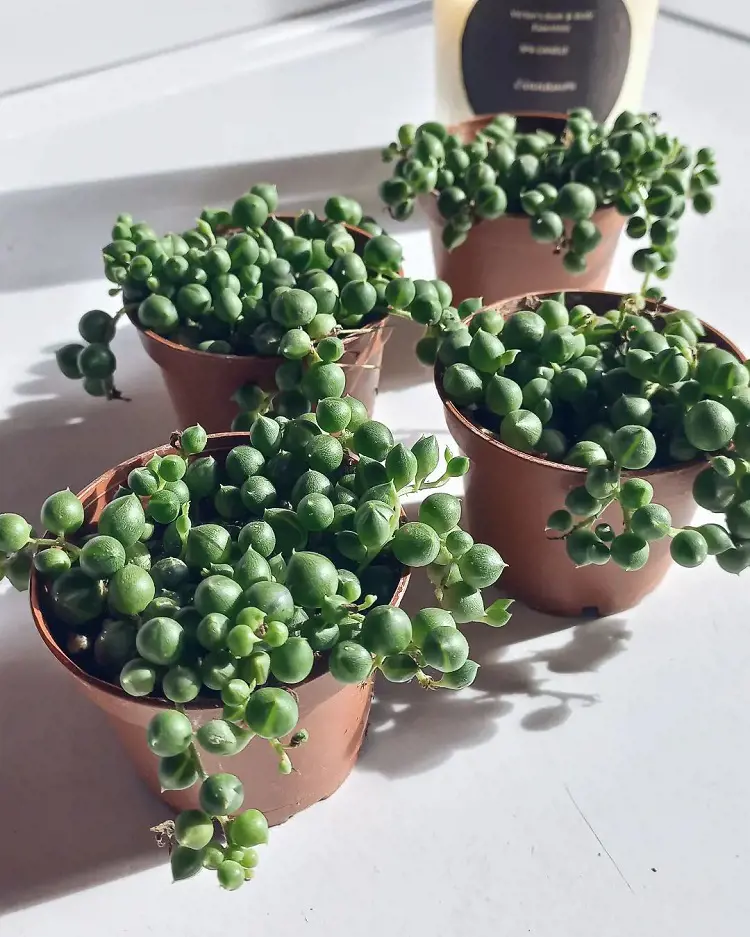
For your string of pearls, use filtered or distilled water. This helps prevent the build-up of minerals that might hurt the plant as time goes on. Regular tap water sometimes has minerals that can gather and cause trouble.
By using filtered or distilled water, you give your string of pearls the clean and pure water it likes. This simple step keeps your plant healthy and happy, ensuring it stays vibrant and beautiful. So, when it's time to water your string of pearls, go for the good stuff.
Average Indoor Humidity
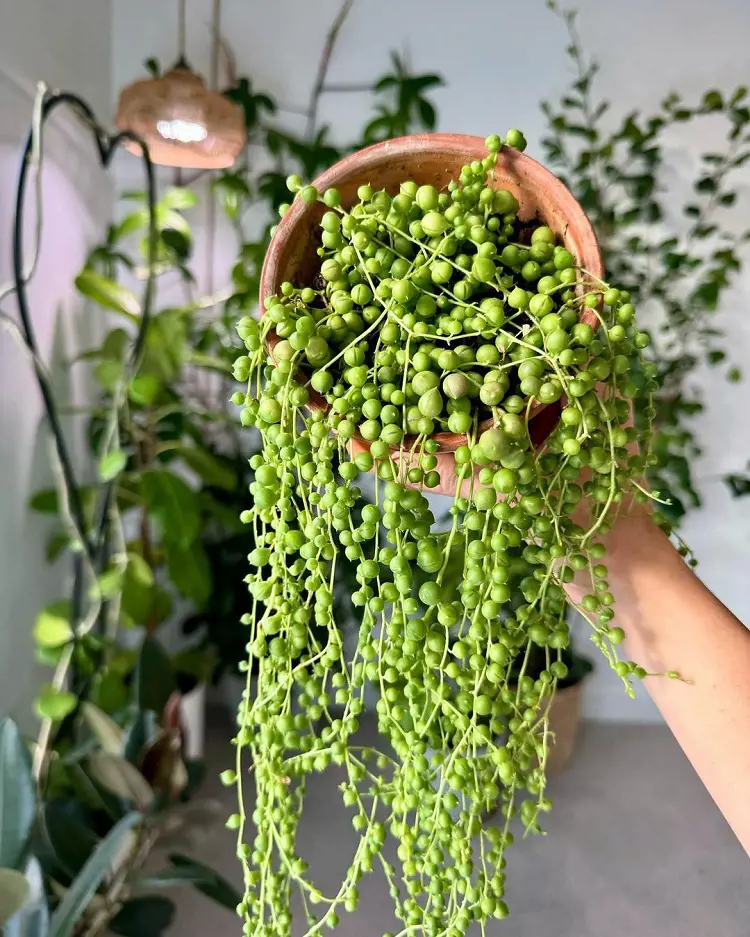
Your string of pearls likes the humidity to be just right. Luckily, it's not too fussy; it prefers average indoor humidity. This plant is used to living in homes where the air is a bit on the dry side, so it's well-adapted to that.
You don't need to do anything special for the humidity; just keep it in your usual indoor conditions, and your string of pearls will be perfectly happy. So, if your home is not too humid, don't worry, your plant will thrive in the regular conditions you provide.
Fertilize Sparingly

Feed your string of pearls with fertilizer, but go easy on it. In spring and summer, use water-soluble fertilizer, but make it half as strong, and do this every two weeks. When it's winter, you can take it slow; fertilize every six weeks.
This way, you give your plant the nutrients it needs without overwhelming it. It's like giving your string of pearls a treat during the growing season and a milder treat when it's taking a winter break.
Prune For Bushier Growth
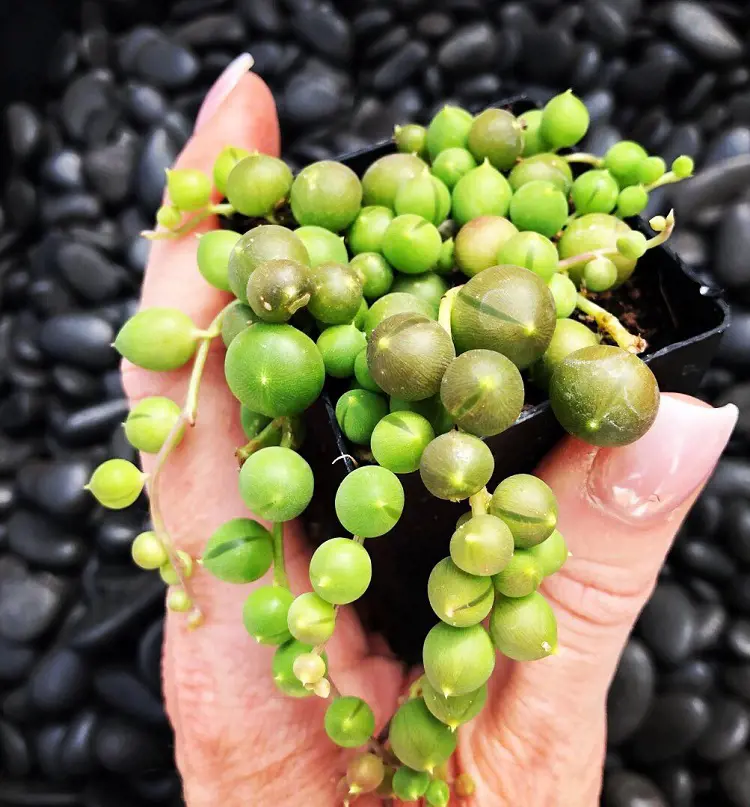
If your string of pearls is getting a bit long and you want it to look bushier, you can give it a trim. Just pinch off the ends of the vines, and your plant will start growing more branches, making it look fuller.
It's like giving it a little haircut to keep it in shape. The cool part is, the parts you cut off can be used to make new plants. So, not only do you get a bushier and more compact string of pearls, but you can also expand your plant family by growing new ones from the clippings.
Repot When Rootbound
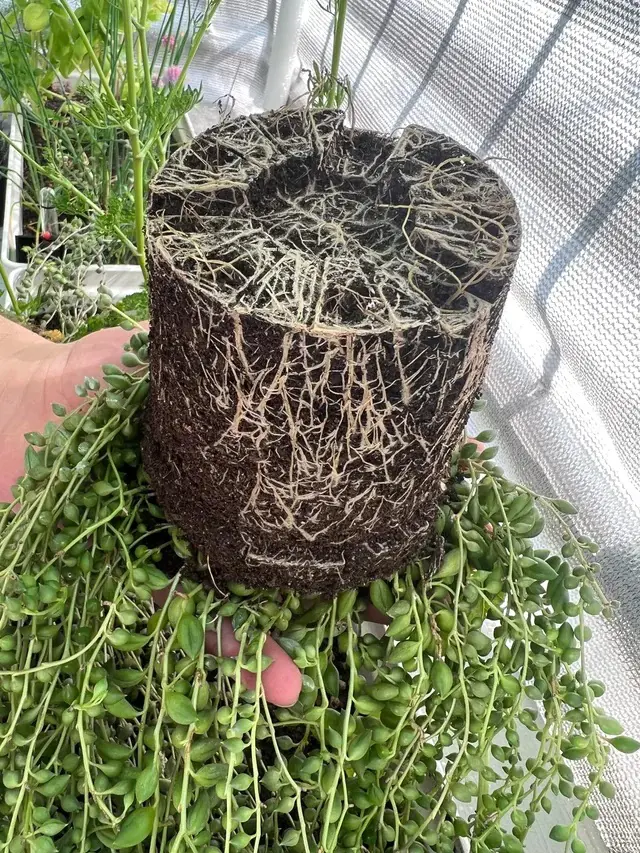
For the string of pearls plant, repotting is typically recommended in autumn when it's not in its active growth phase. However, if the plant appears cramped in its current container, earlier repotting is advised. Opt for one that is at least 2 inches wider in diameter than the current container, considering the plant's shallow root system.
Follow the tips to repot a string of pearls plant:
- Turn the pot upside down for removal, ensuring the strings hang loose to prevent breakage.
- Use a thin blade or tool to delicately break away extra soil, revealing more roots.
- Carefully place the string of pearls in the new pot.
- Fill the sides of the new container with additional soil.
- Consider adding LECA, perlite, and orchid bark to create a suitable cactus or succulent soil mix for optimal growth.
Propagate From Cuttings
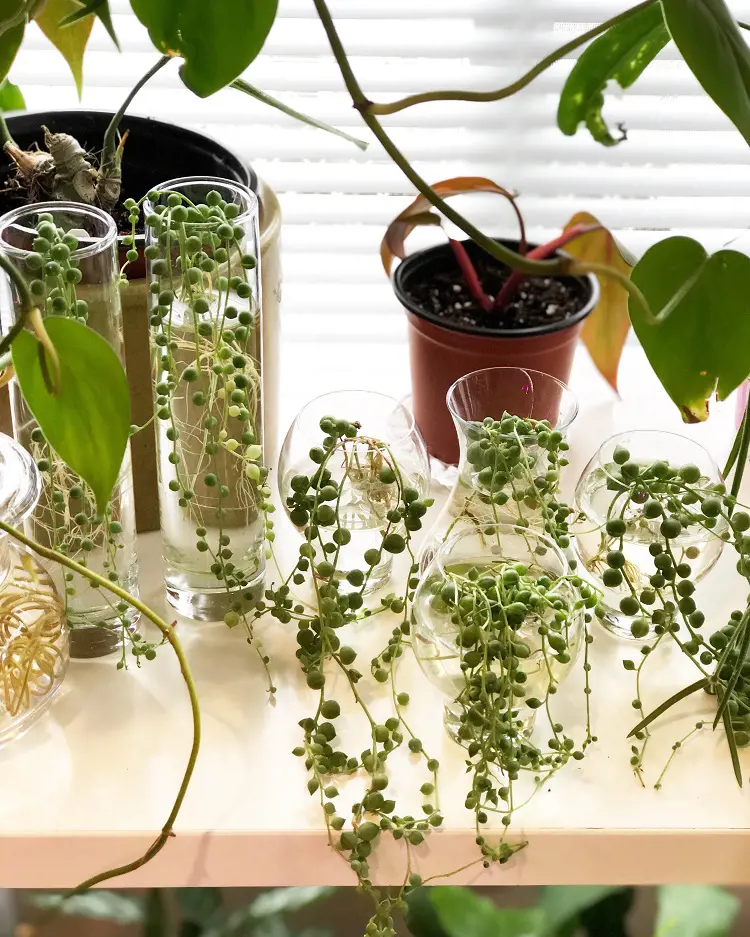
Propagate String of Pearls plants from cuttings! Snip a 4-6 inch piece from a healthy plant, making sure it has a few beads. Put the cutting in well-draining soil, like cactus mix, and bury at least one or two beads.
Keep the soil damp until roots grow. You can cover the cutting to keep it humid and help roots form. Treat the new plant like a big one, giving it light and water as needed. This simple process lets you create more String of Pearls plants.
Protect From Pests And Diseases
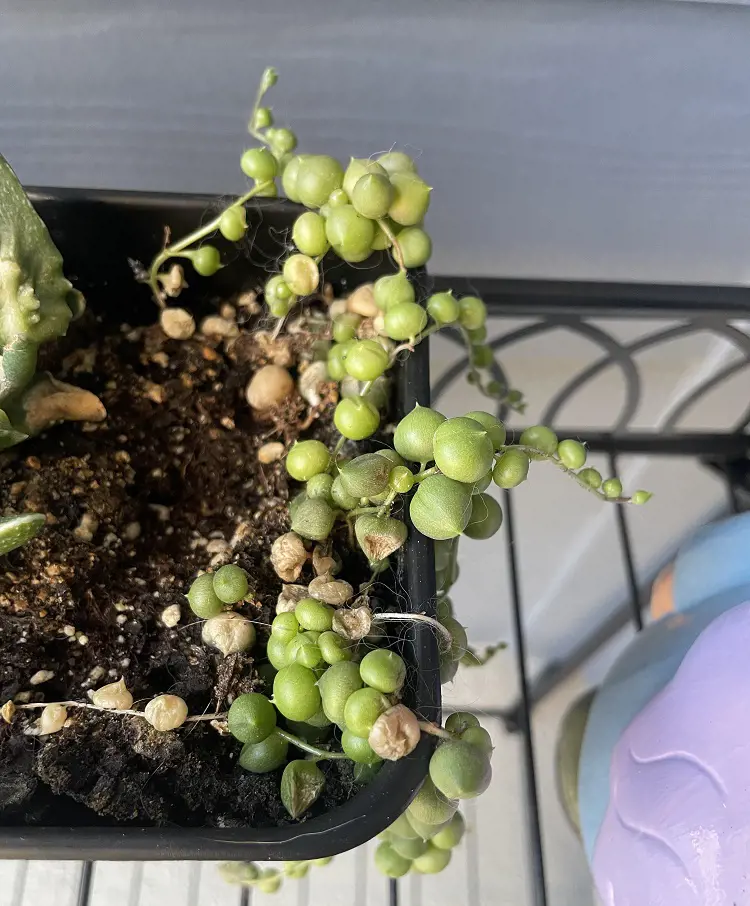
String of Pearls can get bugs like aphids, mites, whiteflies, and ants, especially when it's not feeling great. Things like too much water, high humidity, and not enough light can make it weak and prone to pests.
To keep them away, don't water too much, use a neem oil spray, and let the plant get fresh air. Check it often for bugs. Neem oil and soapy water are natural ways to get rid of bugs without using strong chemicals. Before trying strong bug sprays, give these natural methods a shot to keep your String of Pearls healthy and bug-free.
Provide Support
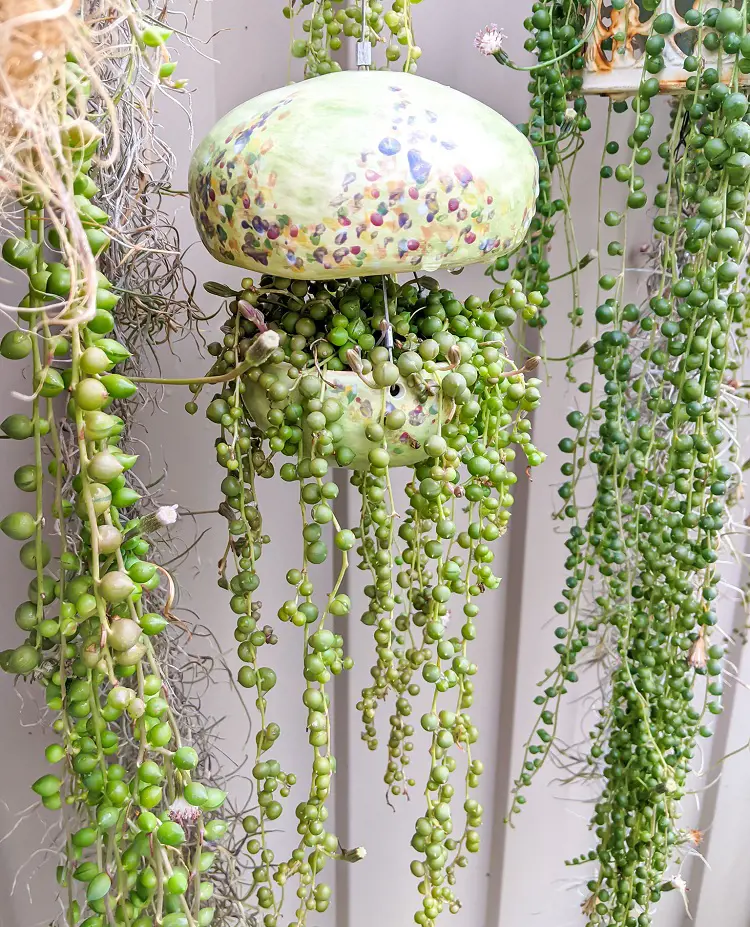
As your String of Pearls plant continues to grow, it may start trailing on the ground, and providing support becomes essential for its well-being. To prevent the delicate strands from sprawling and potentially breaking, consider using a trellis, hanging basket, or any suitable support system.
A trellis allows the plant to climb upward, creating an attractive display while maintaining its form. Alternatively, a hanging basket provides a natural way for the pearls to cascade, adding an elegant touch to your space.
Dormancy Period

String of Pearls experiences a dormant phase in the fall and winter, a natural resting period for the plant. To support its well-being during this time, adjust your care routine. Reduce watering significantly and refrain from fertilizing the plant.
The dormant period allows the plant to conserve energy, so these adjustments help mimic its natural growth cycle. Be mindful not to overwater during dormancy, as the plant's water needs decrease. As spring approaches, gradually resume regular care, including regular watering and, if needed, fertilization.
Troubleshooting

If your String of Pearls looks pale or yellow, it might be due to too little or too much light. Make sure it gets bright, indirect sunlight, avoiding harsh direct sun. If the soil lacks nutrients, the beads can lose their color.
Use a balanced, succulent-friendly fertilizer, and don't overdo it. Check for specific nutrients like nitrogen, phosphorus, and potassium. Consider adding compost or manure to the soil for an extra boost. By finding the right light and giving your plant the nutrients it needs.
Be Patient

The string of pearl plants grows at a slow pace, so don't worry if you don't see big changes quickly. Be patient and give them the proper care. They'll thank you by showing off their lovely, hanging leaves over time.
Make sure these hanging indoor plants get enough light but not too much direct sun, and water them when the soil is dry. Don't be in a hurry for them to grow fast – slow and steady is their style. With a little time and the right attention, your String of Pearls will reward you with their beautiful, trailing greenery that adds a special touch to your space.
Popular Varieties of String of Pearls
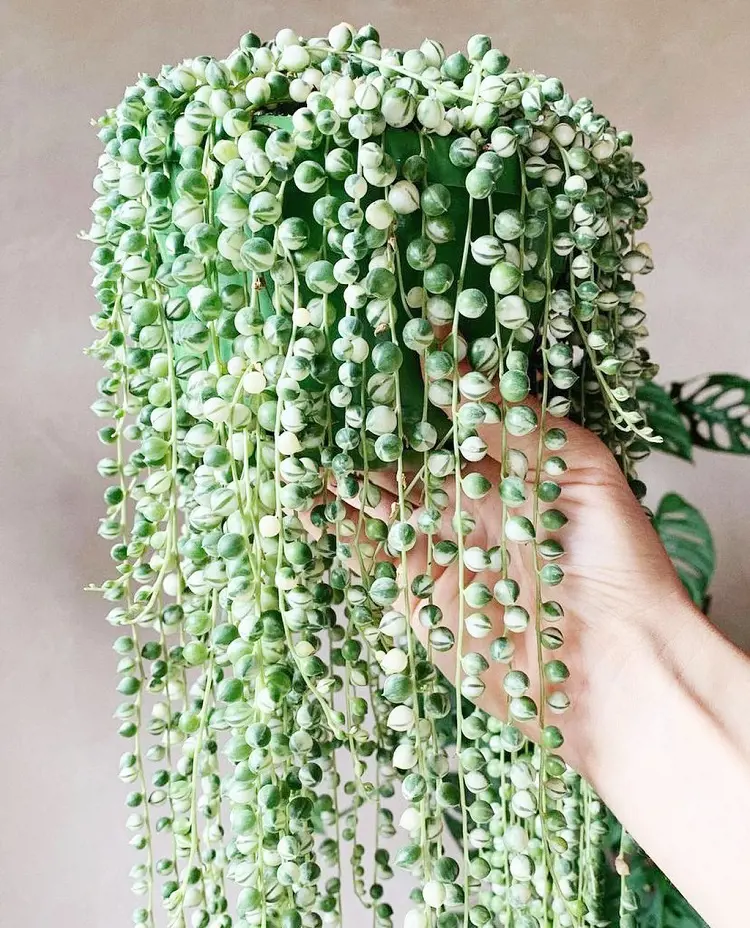
The String of Pearls plant has gained popularity for its unique trailing appearance and easy care. While the classic variety is well-known, several cultivars and related species offer variations in leaf color and size. Here are some popular varieties:
- Classic String of Pearls (Senecio rowleyanus): Known for its small, bead-like leaves trailing on thin stems, creating a distinctive look.
- String of Bananas (Senecio radicans): Similar to String of Pearls but with banana-shaped leaves.
- String of Dolphins (Senecio peregrinus): Features leaves that resemble leaping dolphins, adding a playful twist.
- Variegated String of Pearls: A variation with leaves showcasing different shades of green, creating a striking visual effect.
- String of Hearts (Ceropegia woodii): Although a different species, String of Hearts shares the trailing habit and is often grouped with String of Pearls due to its similar growth pattern.
Remember, these varieties share the same care requirements, making them equally manageable for indoor gardens and succulent enthusiasts.
Is String Of Pearls A Toxic Plant?
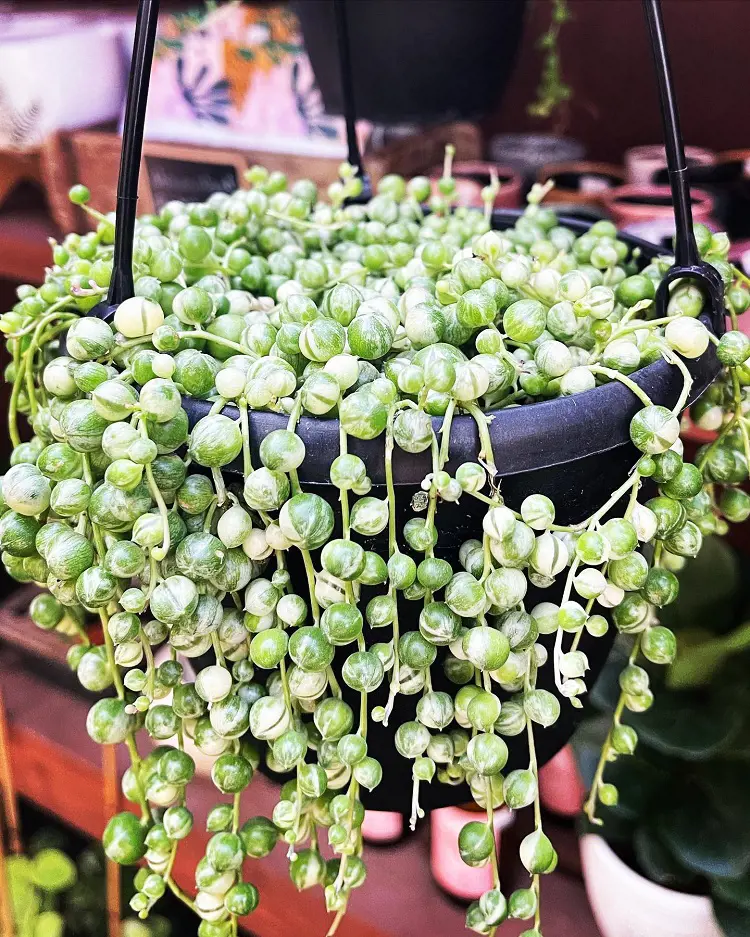
Yes, the String of Pearls plant is considered toxic to humans and pets. It contains compounds called alkaloids, particularly in its small bead-like leaves. If ingested, these alkaloids can cause varying degrees of toxicity, leading to symptoms such as nausea, vomiting, diarrhea, and, in rare cases, more severe effects.
It's important to keep String of Pearls out of reach of children and pets, and if you suspect ingestion, seek medical attention or consult with a veterinarian immediately. Additionally, when handling the plant, it's advisable to wash your hands thoroughly afterward to avoid any potential skin irritation.
Final Words
As you embark on the delightful journey of caring for String of Pearls, remember that a bit of attention and understanding can result in a breathtaking display of cascading greenery. By providing the right balance of light, water, and nutrients, you'll witness the gradual growth of these unique plants.
This comprehensive guide offers valuable insights to ensure the health and vitality of your String of Pearls collection. With patience and care, you're bound to enjoy the beauty of their trailing pearls. Happy gardening! May your String of Pearls flourish, adding a touch of nature's elegance to your home.




